A report by Charlotte Kühl & Michelle Kirsitna Dixon
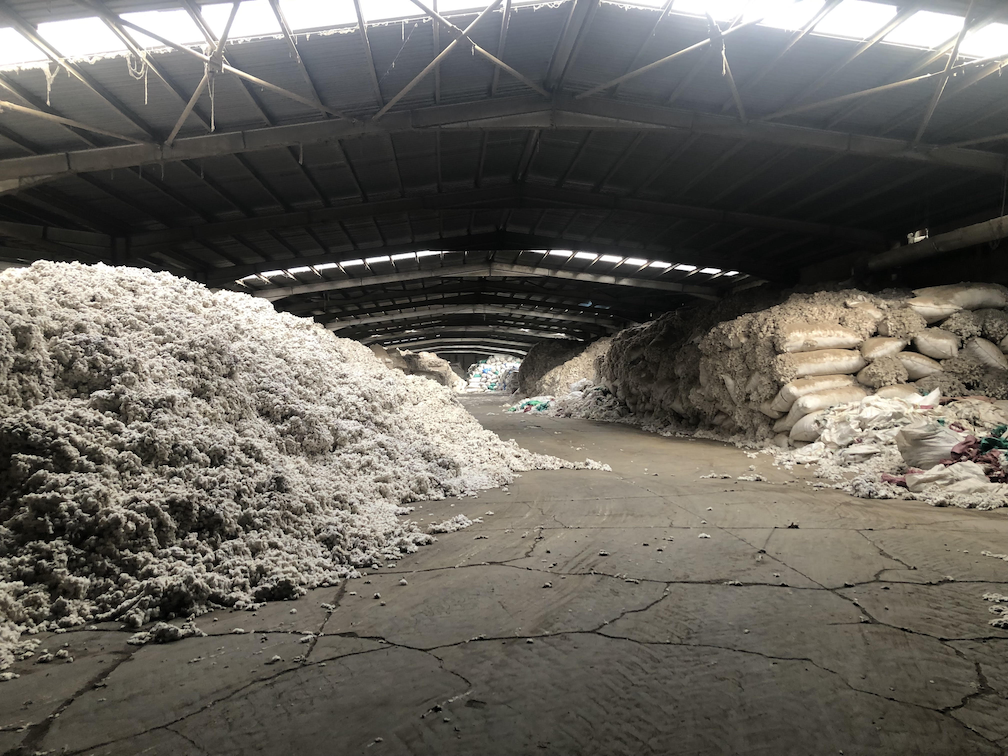
In Addis Ababa, the Amharic language filled its bustling crowded streets. The city’s smoggy air and high altitude of 2600m contributed to our difficult adjustment to limited oxygen. It was mid-May 2022, when we, a team of researchers from Drip by Drip, started our five-week exploration of Ethiopia, “the rising star” in textile production.
We set out to understand the current situation of Ethiopia’s textile and garment industry. In doing so, it was our goal to learn about the current political and economic situation and understand whether Ethiopia will be the next Bangladesh. Additionally, through a three-week collaboration with Sequa gGmbH, an NGO funded by GIZ (German Society for International Cooperation) and UKAID, we had the opportunity to visit a local factory, the Hawassa Industrial Park. There, we spoke with a large international buying agency, which acts as a liaison between major brands and production facilities. We also conducted interviews with stakeholders, which included local and foreign factory managers, factory employees, NGOs, B2B customers, ministry staff, and entrepreneurs. To protect the identity of the interviewees we will not disclose their names.
I. The Rising Star
Our preliminary research depicted Ethiopia as a budding force in textiles, possessing the capability to rival the industries of China and Bangladesh. However, we quickly discovered the lack of validity and substantiality in our online sources. The lack of data brought up questions about Ethiopia’s labor costs, work environment, industrial waste, access to water, infrastructure, investments, foreign connections, security, and health system.
In 2021, Ethiopia’s gross domestic product (GDP) grew by 5.6%, followed by 5.3% in 2022. This growth outpaced the average GDP growth in other East African countries, which was 4.7% in 2021 and 4.4% in 2022, indicating a more rapid economic advancement for Ethiopia. It is projected for Ethiopia’s GDP to maintain an upward trajectory with estimated growth rates of 5.8% in 2023 and 6.2% in 2024. Industry expansion, private consumption, and rising investments primarily fuel this expected growth. [1]
On top of this, Ethiopia has a population of roughly 110 million people, with an expected growth rate of 2.55%.[2] A country with an exponentially growing population offering a plethora of job opportunities with no legal framework of a legal minimum wage is an attractive option for investors. This is because a growing population ensures investors a growing workforce.
Additionally, Ethiopia offers low labor costs. Where there is a low labor cost, you will commonly find textile and garment businesses. The average pay wage for garment workers ranges from $340 to $95 per month, while in Ethiopia, the pay wage is set at $26 per month.[3] This causes a slow and silent factory shift from China, Vietnam, and Bangladesh to countries like Ethiopia. However, the Tigray conflict, which started in 2020 in northern Ethiopia, caused significant destabilization nationwide, impacting several sectors, including the growth of Ethiopia’s textile industry.[4]
II. Ethiopia’s Export and Import Dilemma
To investigate further, we scheduled meetings during the inital two weeks of our exploration with stakeholders in the fields of environmental science, textile production, and business management. Stakeholders included locals, professors, consultants, activists, businesspeople, and fashion designers.
Our preliminary research depicted Ethiopia on the cusps of a new era as they transitioned from a developing state to an industrial state, but it became evident that we drastically underestimated the situation. With every conversation, the illusion of the “rising star in the textile industry” vanished.
Under former Prime Minister Zenawi Haile, the Ethiopian government pursued a Growth and Transformation Plan, which expired in 2020 [5]. This plan pursued various targets, one of which was the development of industry. Under these targets, 13 industrial parks were established for different manufacturing industries – the textile and garment industry was one of them [6].
Industrial parks (IPs) are portions of a city zoned for industrial use. Through the construction and promotion of IPs, Ethiopia approached investors and companies to establish themselves at industrial parks; unfortunately, with no long-term success. [7] We learned from an Indian-owned garment company that their production capacity has shrunk by 50%.
Adding to the dilemma, the US terminated the AGOA agreement, which forced the closure of many factories. The African Growth and Opportunity Act (AGOA) is a US agreement that allows AGOA member countries to export duty-free and tax-free to the United States. Ethiopia has long been a member, but in November 2021, Biden terminated that alliance on the grounds that Ethiopia harbors violations of international human rights due to the Tigray conflict.[8] Such termination caused major producers and fashion companies, such as the PVH Group, to halt production in Ethiopia.[9]
Discussions with factory managers revealed a substantial decrease in export capacity. Previously, 60-80% of goods were exported to foreign markets, but this has now dropped to only 20-30%.
We visited the industrial park in Hawassa, the largest IP hosting 52 halls that are now mostly empty due to the AGOA termination. Hawassa’s IP stood as a foreshadow or a glimpse into the future for many foreign investors, especially from India, China, Bangladesh, and the US.
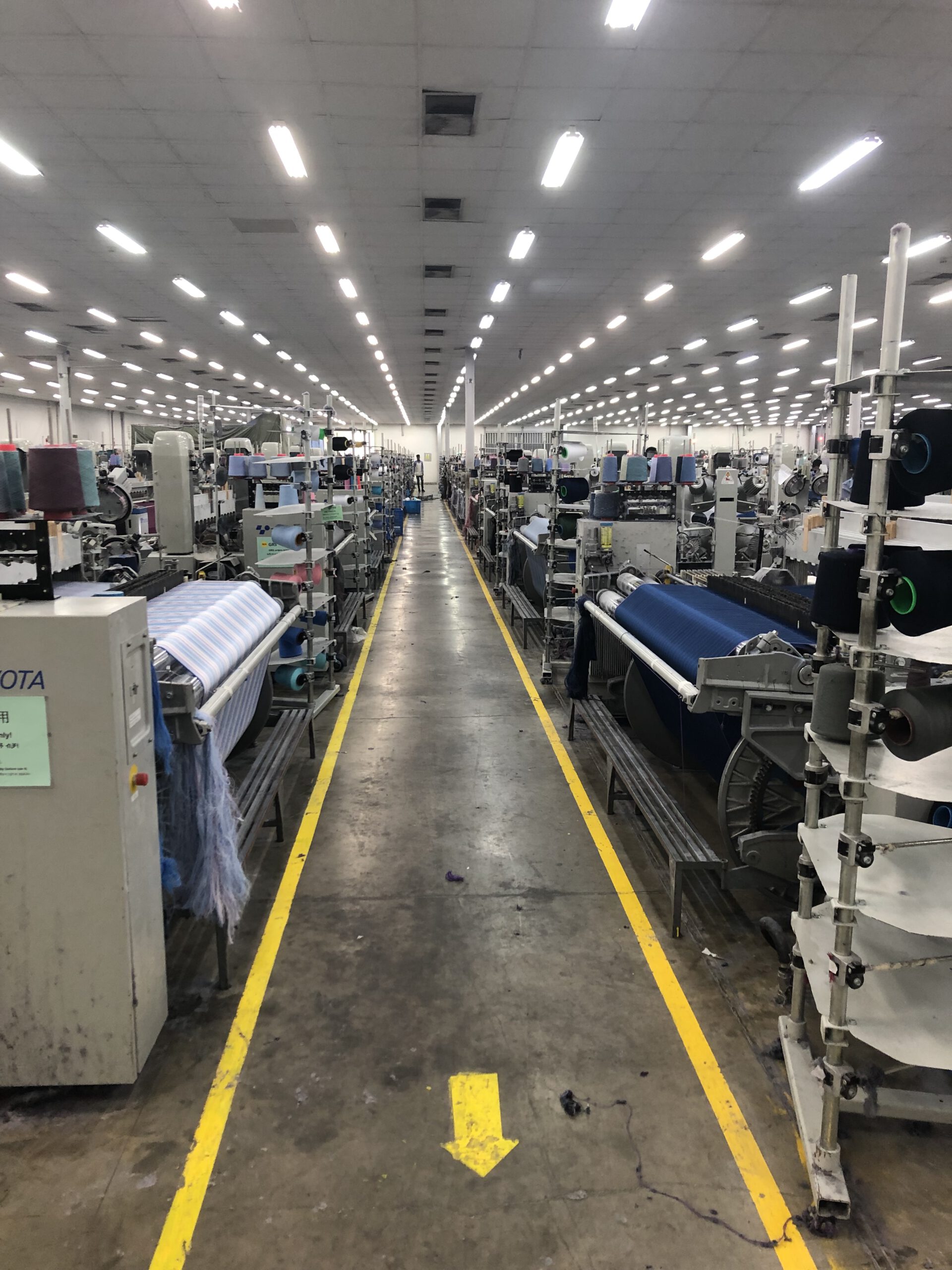
Hawassa Industry Park – Weaving Department
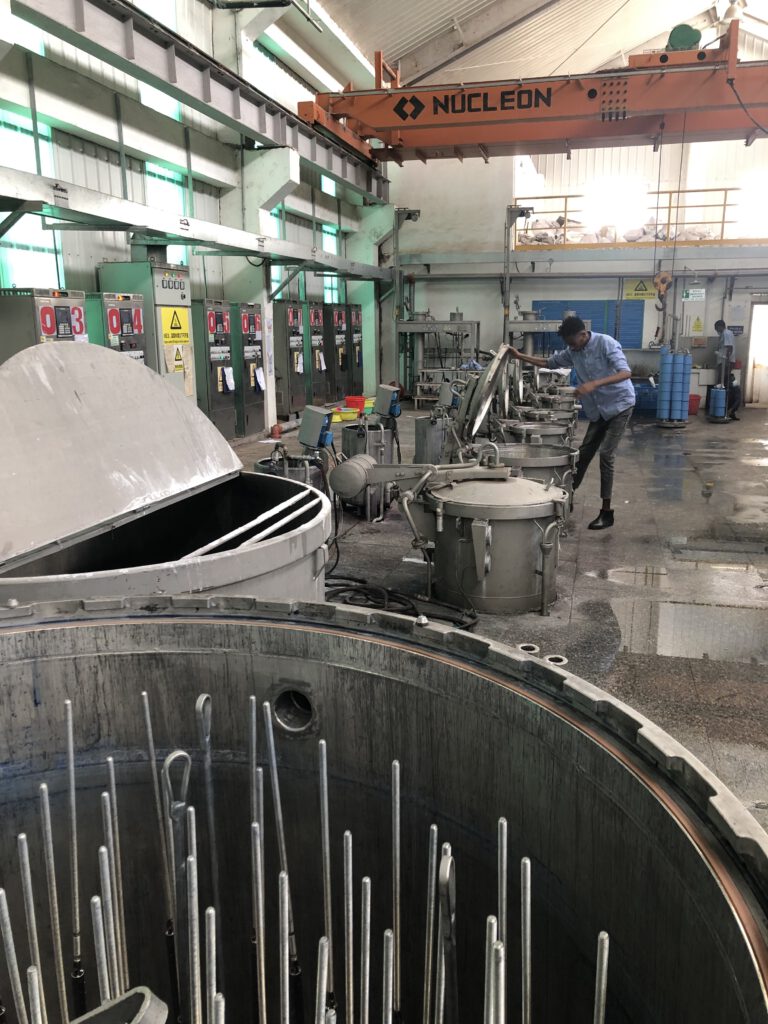
Yarn Dyeing
During AGOA, the majority of Ethiopia’s goods were exported to the US. After AGOA’s end, factory owners aim to target the EU market, which presents greater challenges with its stricter regulations and certification requirements, such as CmiA, OEKO-TEX Standard 100, SteP, and BSCI. For Ethiopian textile companies, this would mean a new type of commitment.
III. Exporting and Importing with an Ethiopian – Owned Factory
During our exploration, we frequently encountered non-certified factories operated by Chinese, Indian, or Sri Lankan entities, which typically import their cotton from China or India. Fortunately, we were able to visit an Ethiopian-owned textile production site located in Kombolcha, about an hour flight from Addis. Kombolcha Textile Share Company is a 100% Ethiopian-operated factory that uses 100% Ethiopian cotton and has a water treatment plant. The factory is also OEKO TEX SteP and ISO 14001:2015 and ISO 9001:2015 certified – a real rarity in the Ethiopian market.
The owner of Kombolcha Textile shared his challenges in importing chemicals, dyes, and spare parts for machines. As a certified company, Kombolcha Textile is required to utilize certified chemicals, which are not locally produced in Ethiopia. Previously, he sourced his dyes from a Swiss company with stores in Ethiopia. However, since the Swiss company closed its stores, the factory owner now has to import all these goods.
To pay for and import goods from abroad, an Ethiopian company needs foreign exchange (forex). Foreign exchange is one of the biggest challenges of the industry. Unlike Euro (EUR) or US Dollar (USD), Ethiopian Birr (ETB) is not an official trading currency.
We learned about Ethiopia’s foreign exchange issue from a GIZ employee. To understand the following example, let’s define two terms:
- Export turnover is the sale proceeds or a company’s earnings from their exported goods.
- Foreign exchange (forex) is trading one currency for another.
So, if an Ethiopian company’s export turnover, or earning amount, is 100 EUR. 80% of their earnings will be converted to ETB and 20% will be converted to forex. This leaves them with 80 ETB and 20 EUR.
Then, 80% of that 20 EUR must be given to the Ethiopian government for forex taxes. This means that the company has only 4 EUR remaining. Remember, ETB is not an official trading currency and they are not allowed to convert the 80 ETB to EUR or USD.
Therefore, the company can only use the remaining 4 EUR to import goods. Needless to say, 4 EUR is not enough to import goods from abroad. Therefore, the instability of import and export costs makes it nearly impossible for smaller companies to survive, especially when they rely on a small amount of forex.
On top of this, the cost of homegrown cotton increased significantly in Ethiopia. In comparison, the Indian cotton price is 2.10 USD, which is about 109 ETB per kg, and the Ethiopian cotton price is 130 to 150 ETB and rising. As a result, many small local factories, like Kombolcha Textile, now use their own stock of cotton for production, which will only last for another 6 months.
This economic backdrop underscores the industry’s dual focus on export growth and employment expansion. However, amidst these priorities, there appears to be a notable oversight in addressing the intricate issue of water management. The lack of emphasis on water supply and sanitation, affecting both large industries and local manufacturers, emerges as the next challenge in our exploration of the sector.
IV. The Water Problem
We had the pleasure of engaging in conversations with professors from a highly renowned university in Ethiopia. They enlightened us about Ethiopia’s water-rich history, which earned the country the name „Water Tower of Africa.“
During our exploration, a local acquaintance informed us about Ethiopia’s government-monitored water meters for private households. These meters are read monthly and consumption must be paid accordingly. However, a notable disparity exists, as this system does not extend to industrial establishments. This discrepancy in water management practices between households and industries became a focal point of our investigation.
In a conversation with a consultant from an Environmental Consultancy Service, who proposes environmental reform to the Ministry of Industry as well as the Ministry of Environment, Forest and Climate Change, we learned the following about industrial water consumption:
IPs are built by the government, and foreign investors rent out the space and use it for production. Foreign investors pay for rent and electricity, but water is free. They are allowed to drill their own water boreholes and are not required to prove consumption. Additionally, treatment of wastewater is recommended, but not required for production. Therefore, the consultancy company advocates for more regulations surrounding wastewater decontamination and water extraction.
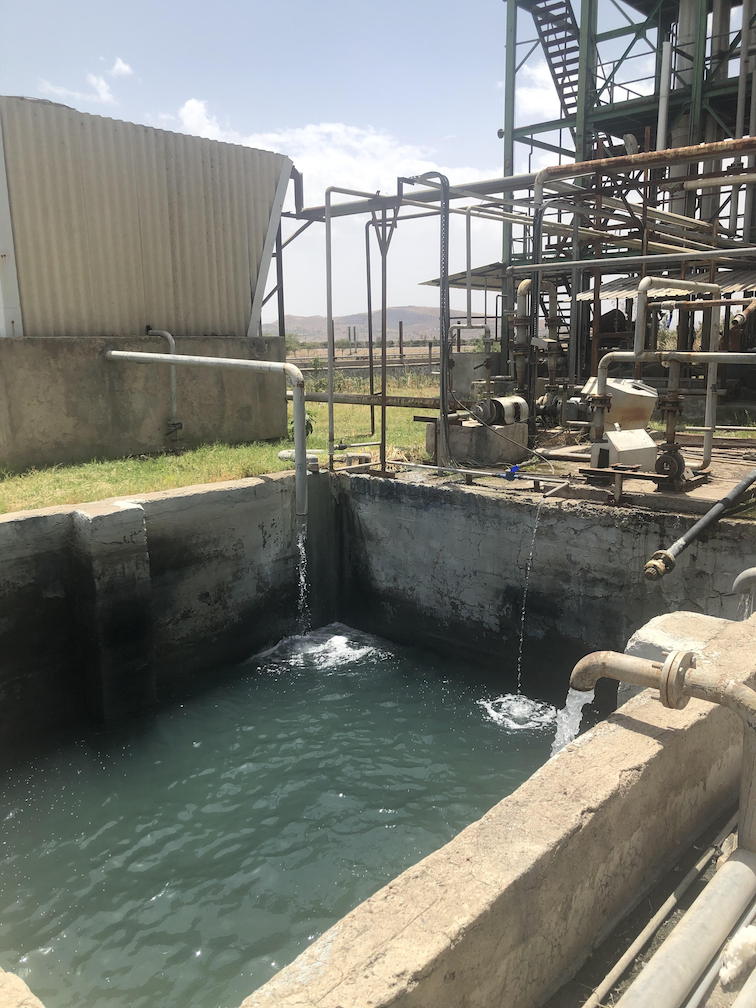
Water Treatment Plant

We spoke with an employee from an Indian-owned textile company regarding their wastewater system and treatment plant. The company installed the treatment plant a year after its opening, aiming to recycle wastewater by treating chemicals and dyes and reintroducing it into the company’s water cycle.
However, the plant did not have the capacity to treat the amount of wastewater produced. Until two years ago, excess wastewater, especially during the rainy season, was simply discharged into the surrounding fields. This led to justified complaints from local farmers, prompting a government warning to the company. While discharge has ceased since then, there has been no discussion or resolution regarding the contaminated fields, which still emit an acrid smell.
Then, another issue surfaced. It was further explained that when the water is reintroduced into production, 10% remains as compressed sludge residue in the form of granules. The company generates five bags of granules daily, and initially, these bags were disposed of in surrounding areas. In response, the government mandated the company to store the bags, which are now housed in a warehouse on-site. However, there is currently no plan for their ultimate disposal.
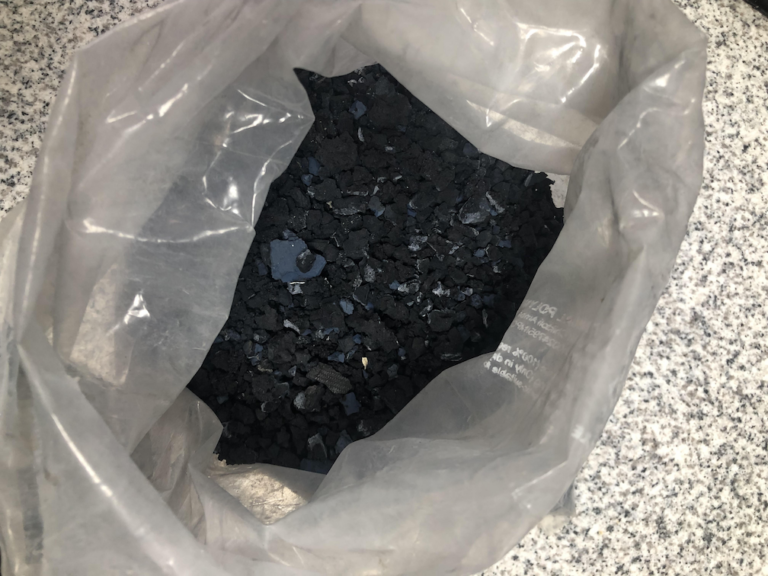
Wastewater treatment leftover – chemical and dyeing granules
V. Conclusion
Our understanding of textile production in Ethiopia was made possible through the generous hospitality of the Ethiopian people. Accessing data, particularly in the realm of water, posed a significant challenge due to the scarcity of reliable surveys. Therefore, our insights were primarily derived from personal conversations with various stakeholders, forming the foundation of our assessment.
While Ethiopia displays immense potential to emerge as the next „rising star“ in the textile industry, existing political and economic challenges remain formidable. As we departed, we harbored mixed feelings. There was concern about the ecological impact, anticipating that unregulated water extraction by industries and the growing focus on local cotton cultivation may lead to a severe shortage of clean groundwater. Conversely, the Industrial Parks (IPs) hold promise for improving the economic situation of the unemployed population, akin to the positive transformations witnessed in Bangladesh. However, the empowerment of the previously unemployed population, especially women who form a considerable segment of the textile workforce, heavily relies on favorable working conditions and fair wages. This is crucial, given reports that Ethiopia’s garment workers earn the lowest wages globally.
Reconciling Ethiopia’s economic potential in the textile industry, with challenges like ecological concerns and the need for fair working conditions for the workforce, especially women, calls for a delicate balance. Nonetheless, we believe advancements toward reconciliation can be accomplished through the early implementation of laws regulating water use across the production cycle. Without clean water, even the most substantial economic growth may be insufficient to avert a humanitarian crisis. We will closely monitor these developments with keen interest.
Citations:
[1] African Development Bank Group. (2023). African
Economic Outlook 2023: Mobilizing Private Sector Financing for Climate and Green Growth in Africa. African Development Bank. Retrieved November 29, 2023, from https://www.afdb.org/en/countries/east-africa/ethiopia/ethiopia-economic-outlook
[2]Macrotrends. (n.d.). Ethiopia population growth rate 1950-2023. Retrieved November 29, 2023, from https://www.macrotrends.net/countries/ETH/ethiopia/population-growth-rate
[3] CNBC. (2019, May 7). Report: Ethiopia’s garment workers are world’s lowest paid. Retrieved November 29, 2023 from https://www.cnbc.com/2019/05/07/report-ethiopias-garment-workers-are-worlds-lowest-paid.html
[4] Walsh, D., & Dahir, A. L. (2022, March 16). Why Is Ethiopia at War With Itself? The New York Times. Retrieved November 29, 2023 from https://www.nytimes.com/article/ethiopia-tigray-conflict-explained.html
United Nations Office of the High Commissioner for Human Rights. (2023, September 18). Ethiopia: Nearly one year after ceasefire, UN experts warn of ongoing atrocities, including war crimes and crimes against humanity. OHCHR. https://www.ohchr.org/en/press-releases/2023/09/ethiopia-nearly-one-year-after-ceasefire-un-experts-warn-ongoing-atrocities ;
[5]Food and Agricuture Organzation of the United Nations. (n.d.). Growth and Transformation Plan II (GTP II) (2015/16-2019/20). FAOLEX Database. Retrieved November 29, 2023 from https://www.fao.org/faolex/results/details/en/c/LEX-FAOC169444/
[6] Industrial Park Development Organization. (n.d.).Parks. Retrieved November 29, 2023 from https://www.ipdc.gov.et/service/parks/
[7] Barrett, P. M., & Baumann-Pauly, D. (2019). Made in Ethiopia: Challenges in the Garment Industry’s New Frontier. NYU Stern Center for Business and Human Rights. Retrieved November 29, 2023 from https://issuu.com/nyusterncenterforbusinessandhumanri/docs/nyu_ethiopia_final_online?e=31640827/69644612
[7] Biden, J. R. (2021, November 2). A Message to the Congress on the Termination of the Designation of the Federal Democratic Republic of Ethiopia (Ethiopia), the Republic of Guinea (Guinea), and the Republic of Mali (Mali) as beneficiary sub-Saharan African countries under the African Growth and Opportunity Act (AGOA). The White House. Retrieved November 29, 2023 from https://www.whitehouse.gov/briefing-room/statements-releases/2021/11/02/a-message-to-the-congress-on-the-termination-of-the-designation-of-the-federal-democratic-republic-of-ethiopia-ethiopia-the-republic-of-guinea-guinea-and-the-republic-of-mali-mali-as-beneficia/
[8] Reuters. (2021, November 19). Fashion giant PVH to close factory; Ethiopia blames U.S. sanctions. Retrieved November 29, 2023 from https://www.reuters.com/article/ethiopia-conflict-trade-idUSKBN2I420Y
